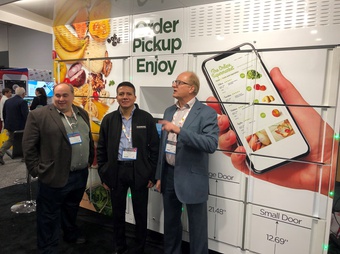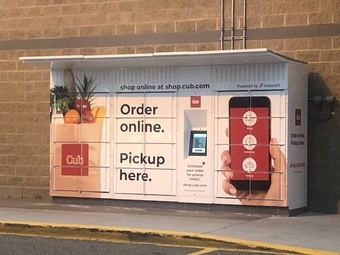Recent Posts
Categories
- Advanced Solutions (12)
- Archeology (7)
- Event Management Solutions (3)
- Events (18)
- Grocery E-commerce (18)
- Innovation (19)
- IT Services (14)
- Land Stewardship (10)
- Locker Solutions (19)
- Natural Resources (7)
- NOC Operations (12)
- Operations (10)
- Science Projects (10)
- Security (8)
- Smart Retail (20)
- Supply Chain (12)

For Grocery Innovation 2019 at the Toronto Congress Centre, Hussmann will be features the Smart Exchange Locker Powered by Mighty Oaks software. The only refrigerated locker solution designed for the North America market and fully compliance with industry standards for food safety.

Cub Pilots Smart Exchange in the mid-west. Cub selected the Hussmann Smart Exchange locker solutions powered by Mighty Oaks software to be integrated into it's online offering. The solution deployed by Instacart allows Cub customers through Instacart to purchase orders online and have orders picked up from a smart locker located just outside the store.
Why delivery?
The importance of last mile delivery is the most crucial step in the supply chain, as the shipment is completed once the goods are delivered. It also presents a significant challenge to make e-commerce greener, cleaner and better for the environment. We need e-commerce to be more Earth-friendly: “we need to reinforce delivery with sustainability.” Ecommerce needs to drive a sustainable model and, therefore, needs to change along with consumer habits. Purpose-driven supply chains are a major shift that does not simply involve introducing new technology or logistics disruption; it calls for a radical rethinking of how we do business and how our public and private organizations function and are shaped. Deliver with Purpose includes real (and not distorted) total costs and returns with a local capital flow to both communities and planet. Sustainability is a macro-economic concept rooted in long-terms goals, for health and survival, that need to be systemically rooted into the micro-economies of internet commerce. The reinvention of delivery moves us all in the age of ecommerce, changing retail and customer expectations. Deliver with Purpose is the next big customer channel transformation and strategy driven by same-day delivery expansion platforms and partnerships.

“Common carrier lockers are consistent with the mobility hub concept and are a potential tool for mitigating the challenges of Final 50 Feet delivery—most urgently, the need to reduce both dwell time (the time a truck is parked in a load/unload space in the city) and the number of failed first delivery attempts.”

Mighty Oaks has entered into an agreement with Total Support Solution where the IT Servvices busienss unit of Mighty Oaks will merge with Total Support Sollutions on Feburary 1st, 2019.
THe new IT Services business will operate under the Total Supprot Solutions brand and for a new 'super' team designed to better serve your needs. This team will more than double the existing available IT support resources and will allow us to serve you better. Over the coming months we'll be providing client portals that allow you to view and manage any tickets or projects in real time. There will also be more direct and faster access to technicians with longer hours of operations which allow us to help you in the evenings and on weekends.

